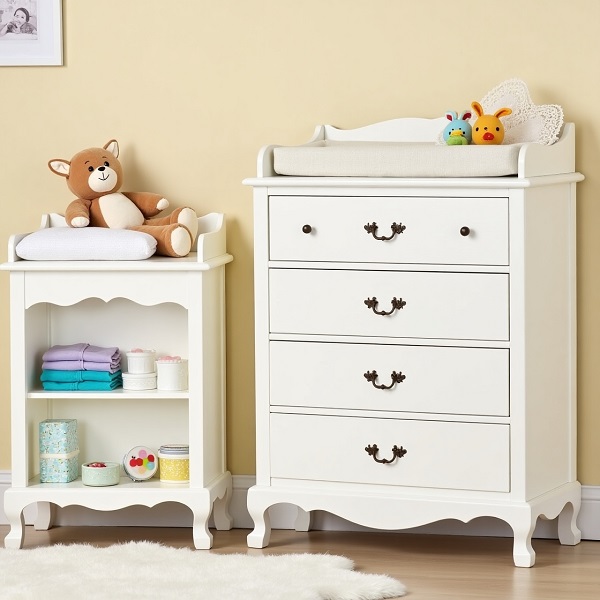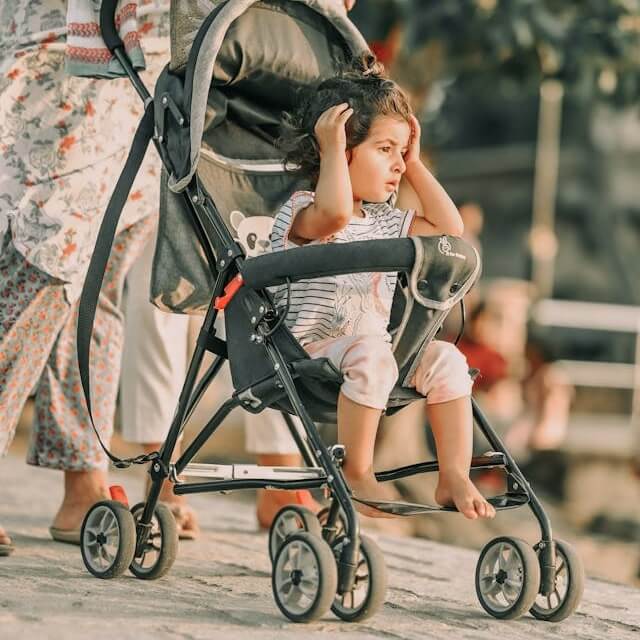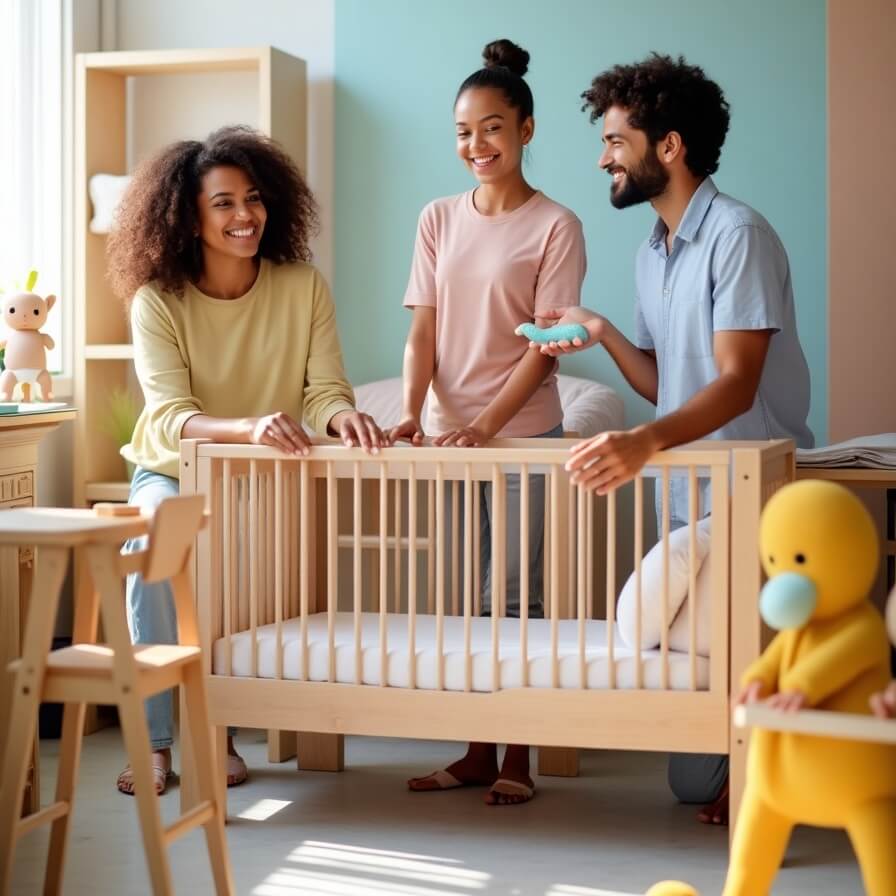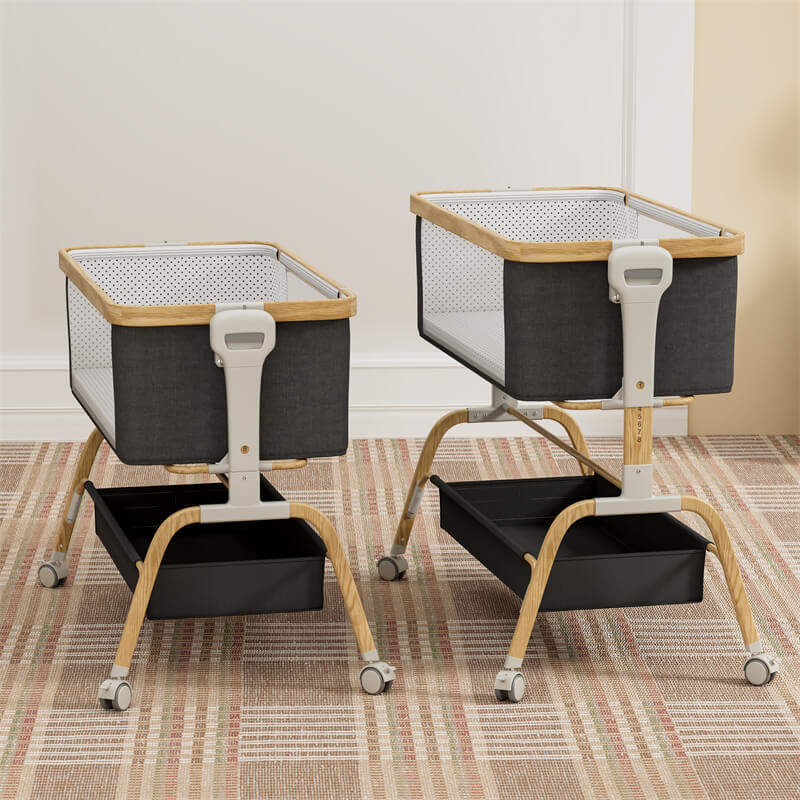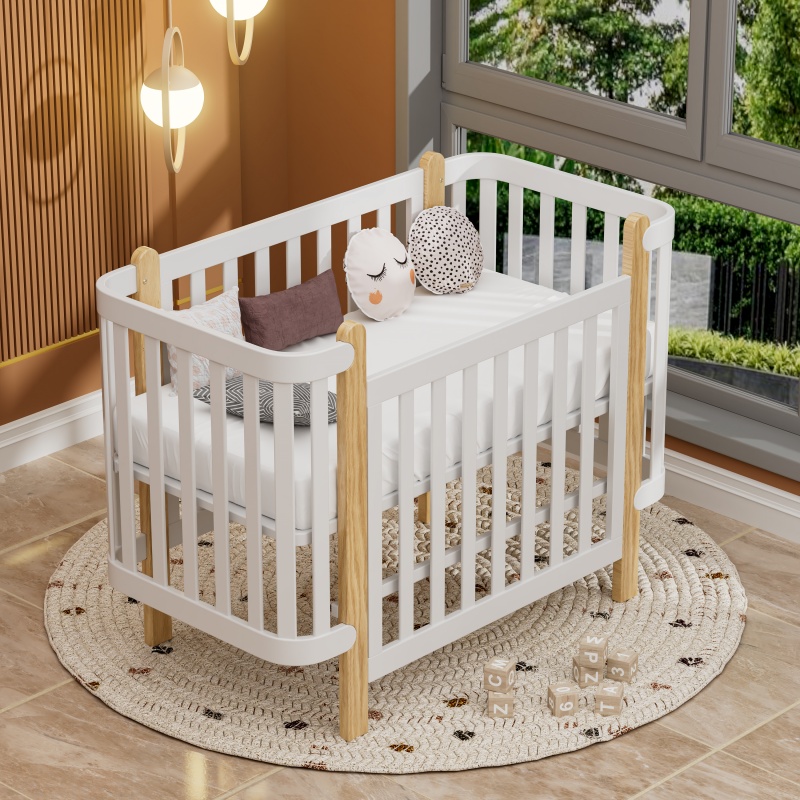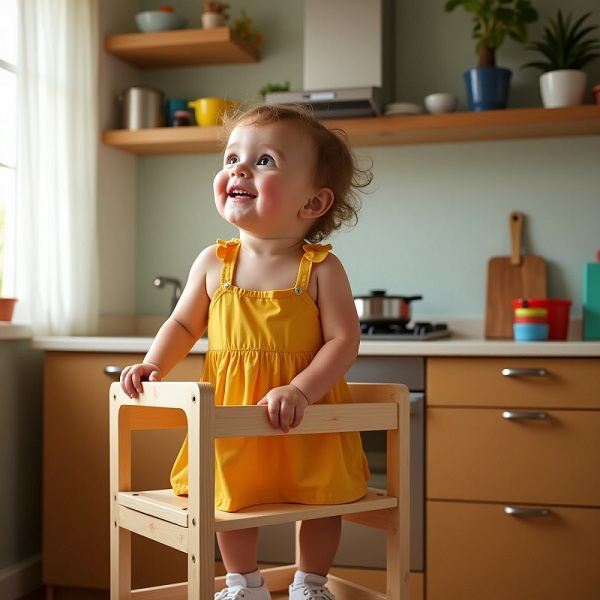Parenthood is filled with decisions, and few feel as pressing as creating a safe, practical nursery. Among the many questions that keep expecting parents awake at night, one stands out: Is a dedicated baby changing table worth the investment, or can a dresser handle diaper duty just as effectively?
The reality? There’s no universal answer. Your decision hinges on your home’s layout, your baby’s safety needs, and even whether you plan to grow your family.
For instance, the American Academy of Pediatrics (AAP) stresses the importance of using secure, clutter-free surfaces for diaper changes to prevent accidents—a detail that might push some parents toward a purpose-built table. Others, however, might prioritize furniture that adapts as their child grows, transitioning seamlessly from infancy to toddlerhood.
In this guide, we’ll unpack the benefits, drawbacks, and often-overlooked factors behind both choices to help you make an informed decision.
What is a Changing Table?
Think of it as your diaper-changing command center—a dedicated station designed to turn those endless diaper swaps into safer, less chaotic moments. Unlike multipurpose furniture, this waist-high platform is all about functionality: cushioned surfaces with raised edges cradle your baby, while thoughtful contours keep wiggles contained.
Safety’s the star here. Most models feature guardrails or safety straps (a must, given that nursery falls during changes are surprisingly common, according to safety reports). Everything’s within arm’s reach too—built-in shelves or drawers stash diapers, wipes, and emergency onesies, which feels nothing short of genius during bleary-eyed 3 a.m. emergencies.
But let’s be real: changing tables have an expiration date. Once potty training begins, many parents debate whether to repurpose them as toy storage or pass them along. While they’re not forever furniture, their back-saving height, and clutter-taming design make those early years of diaper duty noticeably smoother.
Still, for those early years, a changing table’s ergonomic height and safety-first build can turn a daily chore into a smoother, more secure routine.
What is a Dresser?
At its core, the dresser is a sturdy cabinet with multiple drawers, traditionally used to store clothing, linens, or keepsakes. In a nursery, it moonlights as a diaper-changing hub when paired with a secure pad, blending practicality with long-term value.
While changing tables has one job, dressers play multiple roles. That flat top? Perfect for a contoured changing pad (just add anti-slip mats or straps). The drawers? They corral diapers, swaddles, and tiny clothes today, then adapt tomorrow to stash art supplies or school uniforms. This chameleon-like quality makes them a favorite for parents who hate single-use gadgets.
But here’s the catch: dressers demand smart setup. No built-in safety rails mean wall anchoring is essential—especially since tip-over accidents led to tougher safety rules. And while their height offers storage space, taller dressers might leave shorter parents leaning awkwardly during changes.
Yet that’s the trade-off for versatility. A well-chosen dresser doesn’t retire after diapers. In essence, a dresser is a pragmatic investment for parents who value adaptability. It’s not just a diaper station—it’s a foundational piece of furniture that quietly supports your family’s journey, one drawer at a time.
Key Differences: Changing Table vs. Dresser
Design and Purpose
A changing table is a specialist. Its height saves your back, the padded surface cuddles your baby, and built-in rails act like tiny bodyguards against rolls and wiggles. It’s like having a dedicated workstation for a single task—efficient but limited in scope.
A dresser, by contrast, is a generalist. That flat top becomes a changing station with a secured pad, while drawers hide everything from sleepers to stuffed animals. It’s not about diapers—it’s about evolving with your life.
Safety Features
Safety is where these two pieces truly differ. Changing tables are built with infant safety as a priority. It has contoured edges, anti-roll straps, and surfaces that grip like a mama bear. They’re tested to meet strict safety standards, so you’re not just guessing—you’re covered.
Dressers play by different rules. No built-in safety nets here. You’ll need to DIY it: anchor it to the wall, and add non-slip pads. Tip-over risks are real, so vigilance is key.
Storage and Organization
Changing tables offer “emergency mode” storage—shallow shelves for diapers, wipes, and cream. It’s a grab-and-go setup, but good luck stashing anything bigger than a burp cloth. The storage is convenient but limited, tailored to short-term needs.
Dressers, with their deep drawers and expansive storage capacity, excel at organization. Their deep drawers swallow onesie piles, swaddle mountains, and even a giant teddy. The tradeoff? You’ll need to keep diaper supplies within reach, which might mean adding baskets or organizers on top.
Longevity and Cost
A changing table’s utility peaks during the diaper years—typically 2-3 years. After that, it becomes redundant unless repurposed, which isn’t always feasible. While upfront costs are often lower, its limited lifespan can make it a short-term investment.
Dressers? Marathon runners. Buy a sturdy one, and it’ll outlast toddlerhood, surviving as a teen’s sock graveyard or a craft supply bunker. Pricier initially, but over a decade, that cost per use plummets.
The Bottom Line
Choosing between these two comes down to a simple question: Do you want a tool for a specific job or a flexible foundation? Your answer will depend on whether you’re solving for today’s chaos or tomorrow’s changes.
Advantages of Choosing a Changing Table
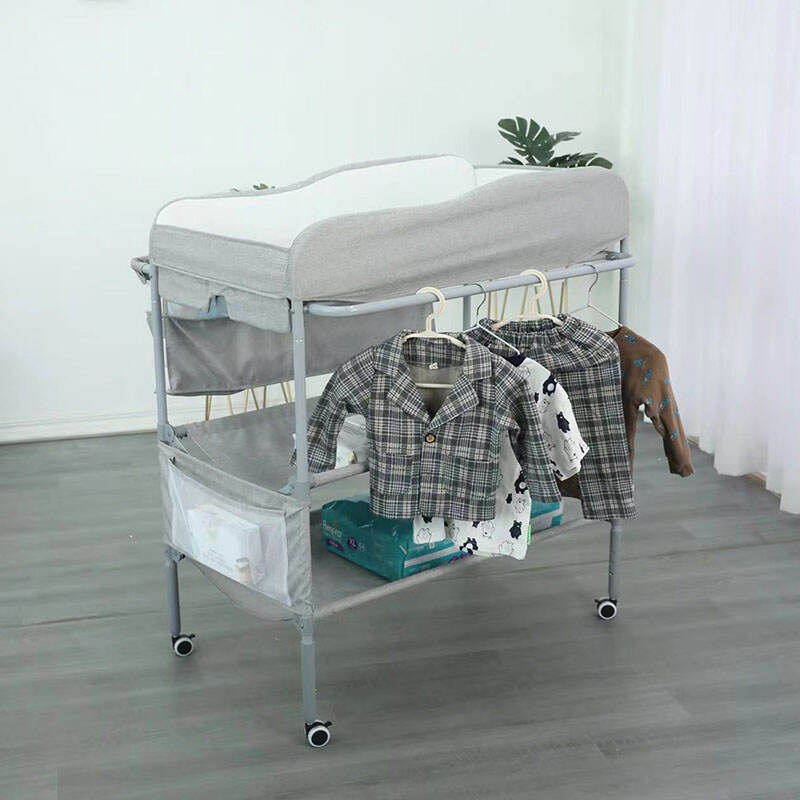
Built-In Safety for Wiggly Little Ones
The raised edges or guardrails act like a protective cocoon, reducing the risk of rolls or falls during diaper changes—a critical advantage when dealing with squirming newborns.
According to the CPSC, falls from elevated surfaces (like beds or countertops) account for a significant number of nursery-related injuries, making the contoured, secure design of a changing table a proactive safeguard.
Safety straps, often included in higher-end models, add an extra layer of security for active babies.
Comfort That Cares for Caregivers
Let’s face it: diaper changes happen a lot—up to 10 times a day in the early months. Changing tables are carefully calibrated to waist height, minimizing back strain and allowing parents to focus on their baby rather than uncomfortable postures.
This thoughtful design proves especially valuable for those recovering from childbirth or managing chronic discomfort, creating a more sustainable caregiving experience.
Unlike a dresser, which might force taller or shorter parents to hunch or stretch, a changing table’s standardized height ensures consistency, turning a repetitive task into a more comfortable routine.
Streamlined Organization
Parents will appreciate the streamlined organization these tables provide. Built-in shelves, cubbies, or shallow drawers keep diapers, wipes, and creams neatly arranged and instantly accessible.
This setup eliminates frantic searches during midnight changes or messy emergencies, letting caregivers maintain focus on their child’s comfort and safety.
Space-saving for Smaller Nurseries
Designed with efficiency in mind, changing tables often feature a compact, vertical footprint—a practical solution for cozy nurseries or shared rooms.
Many models include space-saving options like wall-mounted designs or attachable organizers, preserving valuable floor space for play areas or essential furniture.
Compliance with Safety Standards
High-quality changing tables meet strict safety certifications, ensuring structural stability and non-toxic materials. While dressers can be adapted for diaper duty, they aren’t held to these same infant-specific benchmarks. For families prioritizing verified safety, this distinction offers meaningful peace of mind.
Advantages of Choosing a Dresser
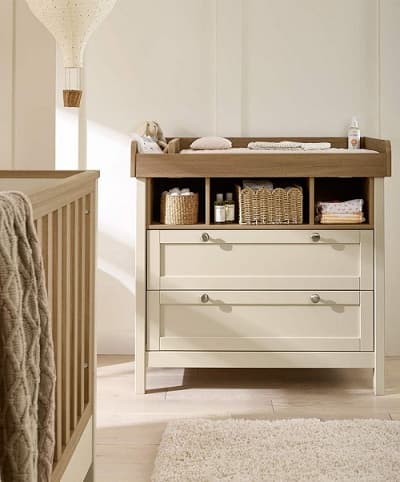
Long-Term Versatility
A dresser isn’t confined to the diaper years. While it can serve as a diaper station with a secure changing pad, its true value lies in its ability to evolve.
Once your child outgrows diapers, the same drawers that once held onesies and wipes can store toys, school clothes, or bedding.
This adaptability makes it a sustainable choice for families planning multiple children or those who prefer to avoid replacing furniture every few years.
Maximized Storage Space
Dressers are storage powerhouses. Their deep drawers and wide surfaces provide ample room for organizing not just diapering essentials, but also clothing, blankets, and nursery decor.
For parents who hate clutter, this means fewer freestanding shelves or bins crowding the room.
Aesthetic Flexibility
Dressers come in endless styles—from sleek mid-century modern to rustic farmhouse—making it easier to match your nursery’s theme or your home’s overall decor.
Unlike changing tables, which often scream “baby furniture,” a dresser’s timeless design ensures it won’t clash with your style as your child grows.
Encourages Mindful Minimalism
A dresser’s versatility nudges parents to prioritize quality over quantity. Instead of filling a nursery with single-purpose items, you’re choosing a minimalist approach that values thoughtful design.
What to Look for When Choosing a Changing Table or Dresser?
For Changing Tables
Safety Certifications: Prioritize models that meet ASTM International safety standards for stability and structural integrity. Look for guardrails at least 2 inches high and safety straps to secure wiggly babies. Avoid tables with sharp edges or flimsy railings.
Ergonomic Height: The table should align with your natural waist height to minimize bending. Test it in-store if possible—if you’re sharing diaper duty with a partner of a different height, aim for a comfortable middle ground.
Storage Accessibility: Opt for open shelves or shallow drawers that keep diapers, wipes, and creams within arm’s reach. Avoid deep cabinets that force you to turn away from your baby during changes.
Durable, Easy-to-Clean Materials: Waterproof surfaces (like laminated wood or wipe-clean vinyl) are essential for messy moments. Steer clear of porous materials that trap odors or stains.
Portability: If space is tight, consider a lightweight, foldable model or one with wheels. Just ensure it locks securely in place during use.
For Dressers
Stability and Anchoring: Choose a dresser with a solid, wide base to prevent tipping. Verify that it includes pre-drilled holes for anti-tip brackets, and always anchor it to the wall—even if it feels heavy.
Drawer Depth and Weight Capacity: Deep drawers (at least 16 inches front-to-back) accommodate bulky items like blankets, while sturdy glides support the weight of folded clothes or toys. Test the drawers: they should slide smoothly without sagging.
Surface Compatibility: Ensure the top is flat and wide enough to securely hold a changing pad (minimum 30 inches wide). Textured finishes or non-slip pads add grip, but avoid overly polished surfaces that could let the pad slide.
Material Quality: Solid wood or plywood construction ensures longevity. Particleboard or MDF can work for budget buys, but check for reinforced corners and avoid units that feel hollow or brittle.
Convertible Potential: Some dressers are designed to transition into changing stations with removable toppers or built-in pad anchors. These hybrid models offer the best of both worlds.
Universal Checklist for Both
Non-Toxic Finishes: Verify that paints, stains, or laminates are free of formaldehyde, VOCs, and phthalates. Look for GREENGUARD Gold or CPSIA certifications.
Rounded Corners: Softened edges reduce injury risks for toddlers exploring their space.
Adjustable Shelving/Modular Design: Adaptable storage grows with your child’s needs.
Weight Limits: Check manufacturer guidelines—some changing tables cap at 30 lbs, while dressers should handle at least 50 lbs per drawer.
Conclusion
Both options serve distinct purposes; your decision ultimately reflects your family’s priorities.
If navigating the daily dozen diaper changes feels overwhelming, a changing table’s safety-first design and ergonomic setup can transform a stressful task into a smoother routine.
Conversely, a dresser appeals to those who view furniture as a long-term partner. Its ability to shift roles—from diaper station to linen storage to teen wardrobe—makes it a quiet ally in your home’s evolving story.
Whichever you choose, anchor it in safety (literally, in the case of dressers!), measure your space twice, and trust your instincts.
Recommended Related Articles:

